I first met brácsás Kedves Botond (Boti) in the summer of 2019 at Kalotaszentkirály folk music camp. I remember watching him play late into the night with his impressive band, Kedves Zenekar.
He told me back then that he does a lot of teaching, so I was excited to be able to check out what he is doing with his students as part of this Fulbright grant. He lives and teaches in Székelyudvarhely (Odorheiu Secuiesc), in the largely Hungarian-speaking region of Székelyföld.
So far, I have observed his lessons and talked to him about teaching on 2 separate occasions: in October 2021 and January 2022.
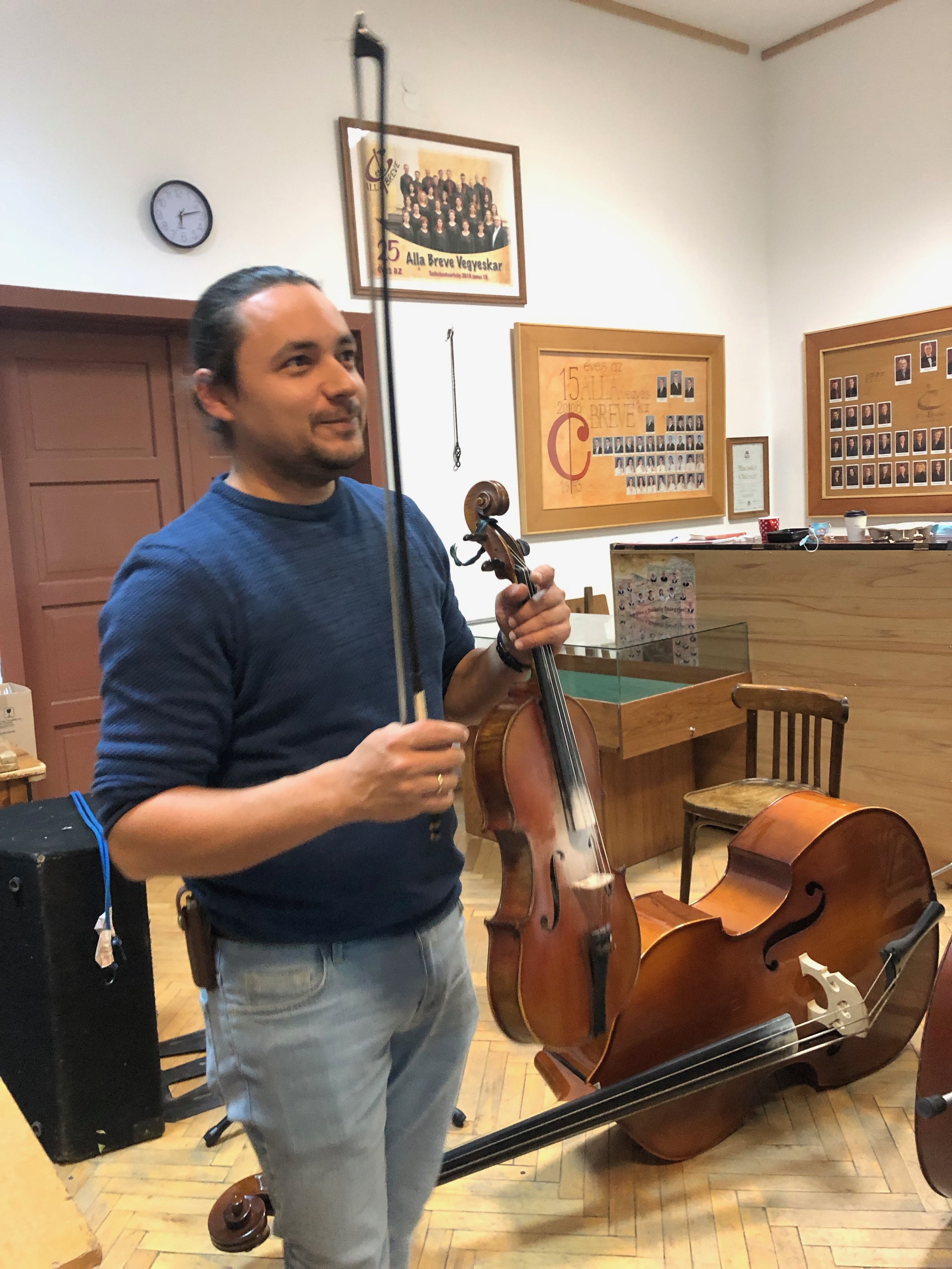
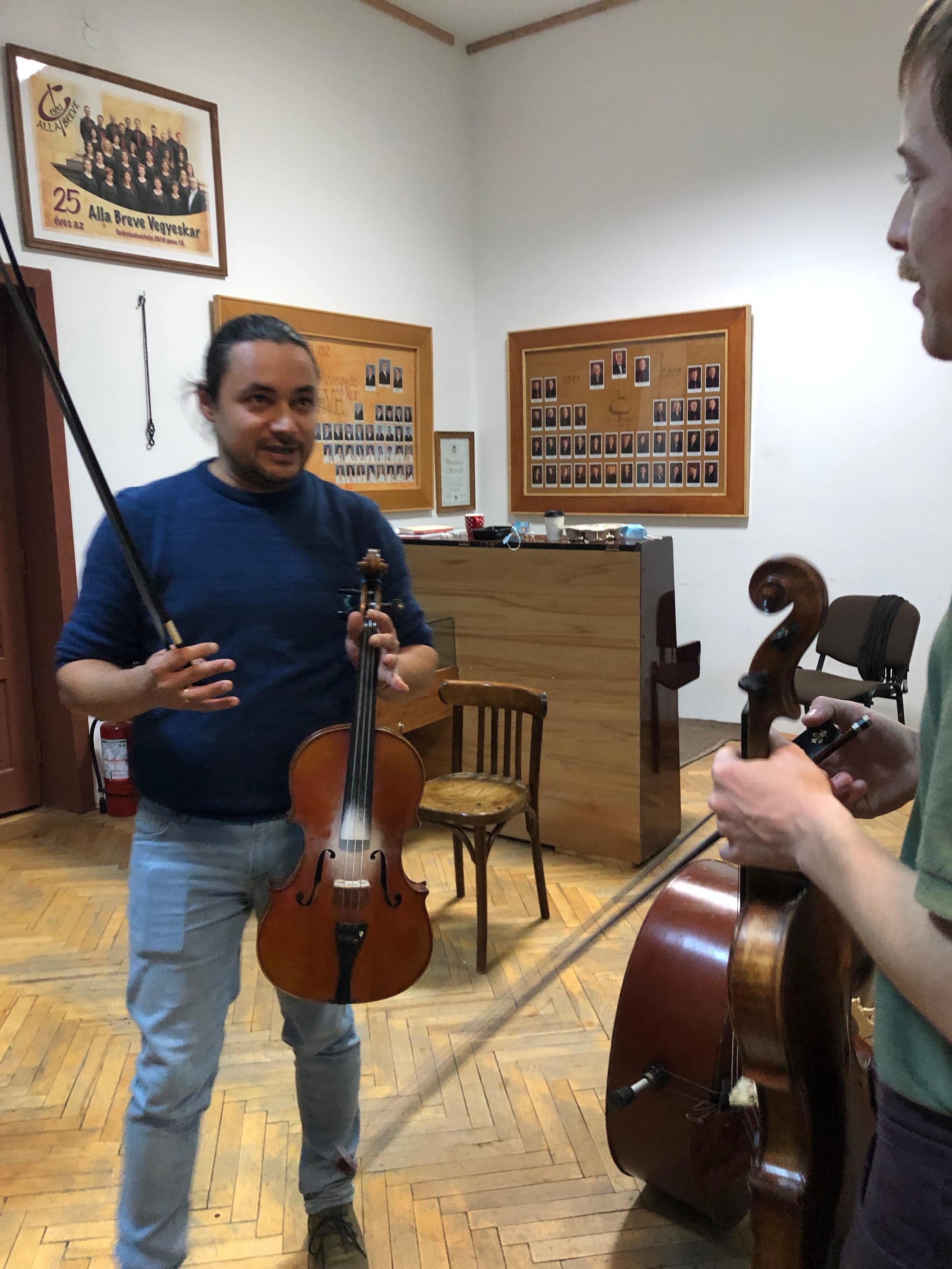

In October, I was there with Fenyvesi Attila, who was translating from Hungarian to English. Boti told me about some basic principles of his teaching philosophy. Mostly he teaches private lessons, to students of all ages. Some key take-aways from that conversation:
— He puts a lot of thought into age-appropriate teaching. For younger kids, he has developed games and songs to make learning fun.
— Playing the brácsa is tiring for beginner students, so he’ll have them rest their hands by playing something on the piano.
— He teaches with the students’ interests in mind. For example, if a student likes to paint, he encourages them to make connections between chords and different colors.
— Since brácsa is a chordal instrument, I was interested to see how he teaches the foundational skills of knowing which note is in which chord. He uses a chart (pictured below) which shows the circle of fifths and the relative major and minor chords.
— He emphasized that “feelings lead first, then definitions”, meaning that the students should first learn by ear how it feels to change chords, then learn the theoretical concepts later.
— He accompanied me on some tunes, then provided some tips on how to be an effective prímás (violinist who leads the band). He said that clearly starting and ending the piece is crucial:
I should play some starting chords before starting the piece. This is a non-verbal cue that lets the rest of the band know which key I’m starting in.
In the very first phrase of a piece, I should play the melody without too much ornamentation so that the rest of the band can pick up what piece I am playing and start in the right tempo.
For ending a piece, I should watch the brácsás’s bow in order to “catch” their bow changes. Then it’s easier to show a clear ending.
— Like Fazakas Levente, he emphasized that learning the melodies without ornamentation is important for many reasons, one of which is that you can more easily recognize the same tune in different regional styles.
— His goal is to help students develop skills so that they can learn independently. He wants them to be “hardworking, persistent, and bold”.
— He said that listening to recordings from the archive is important not only in order for students to hear players who are masters of their instruments, but because those players represent values which can be followed in order to live in a consequent way. This part of the conversation reminded me a bit of Shinichi Suzuki’s writing about character development as a part of music education. I’d like to talk to more folk music teachers here about this topic.
— He advises students to practice every 2nd day because having a rest day strengthens synapses involved in learning. He said “as silence is important to music, forgetting is important to learning”.
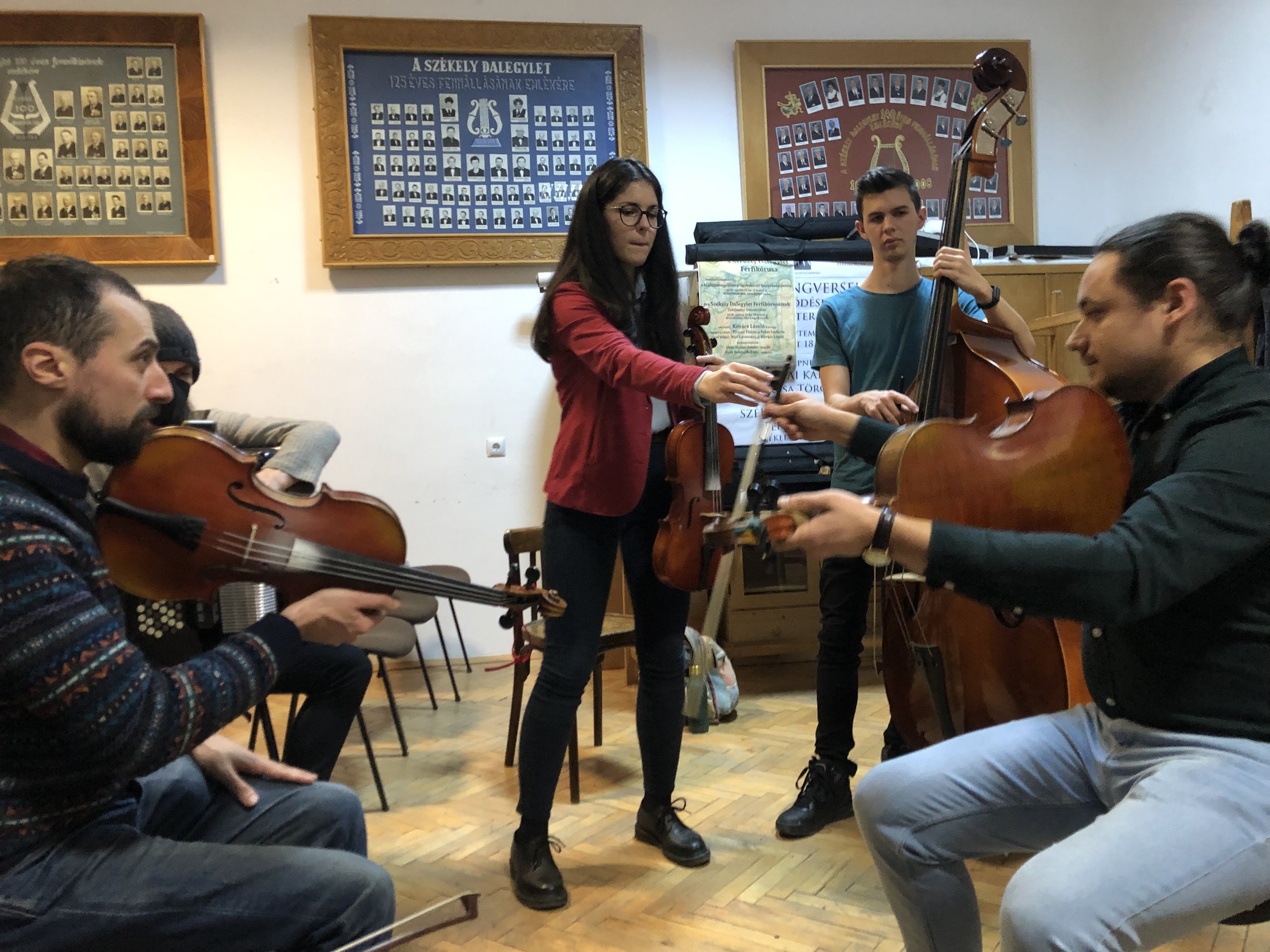
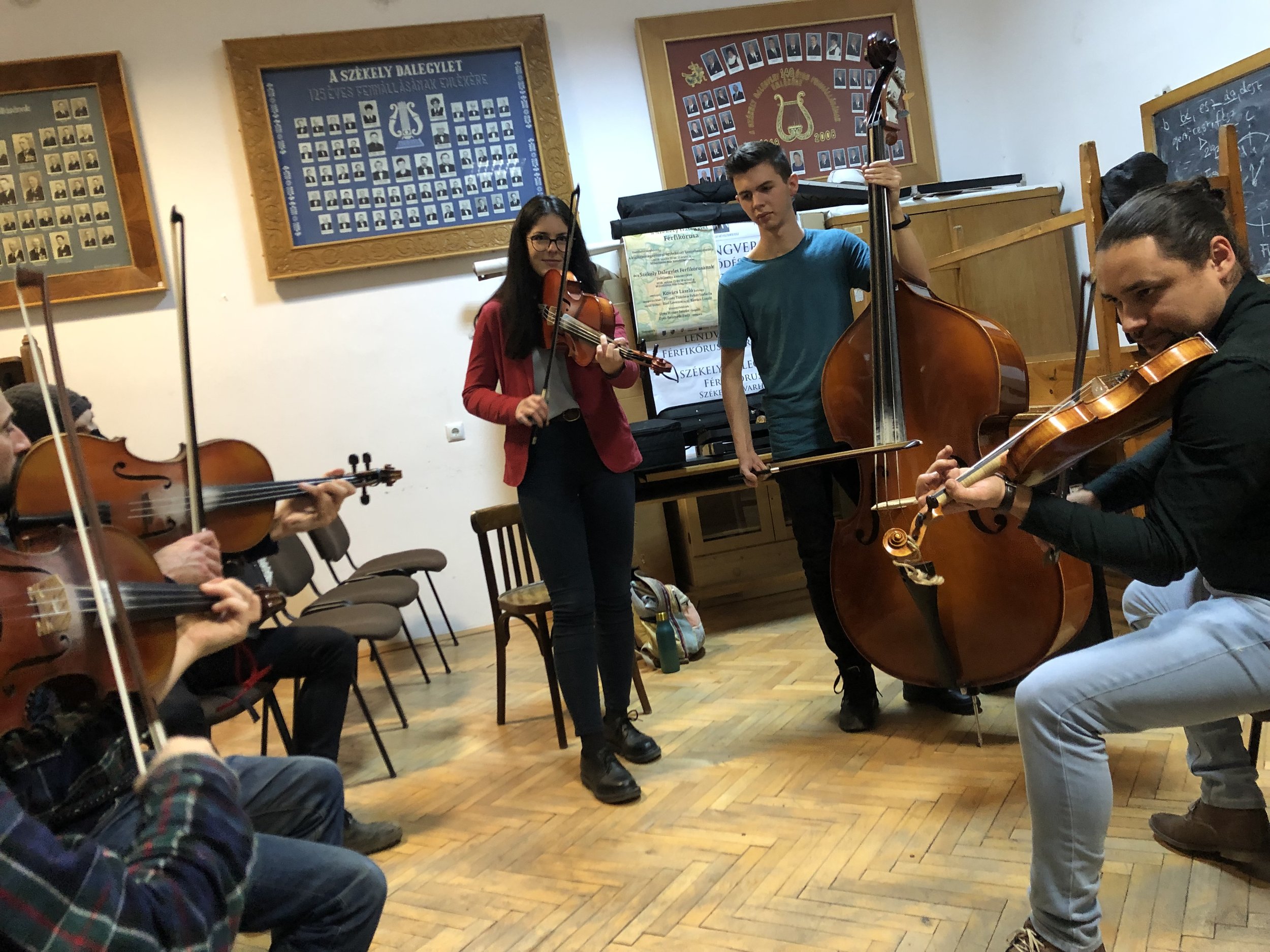
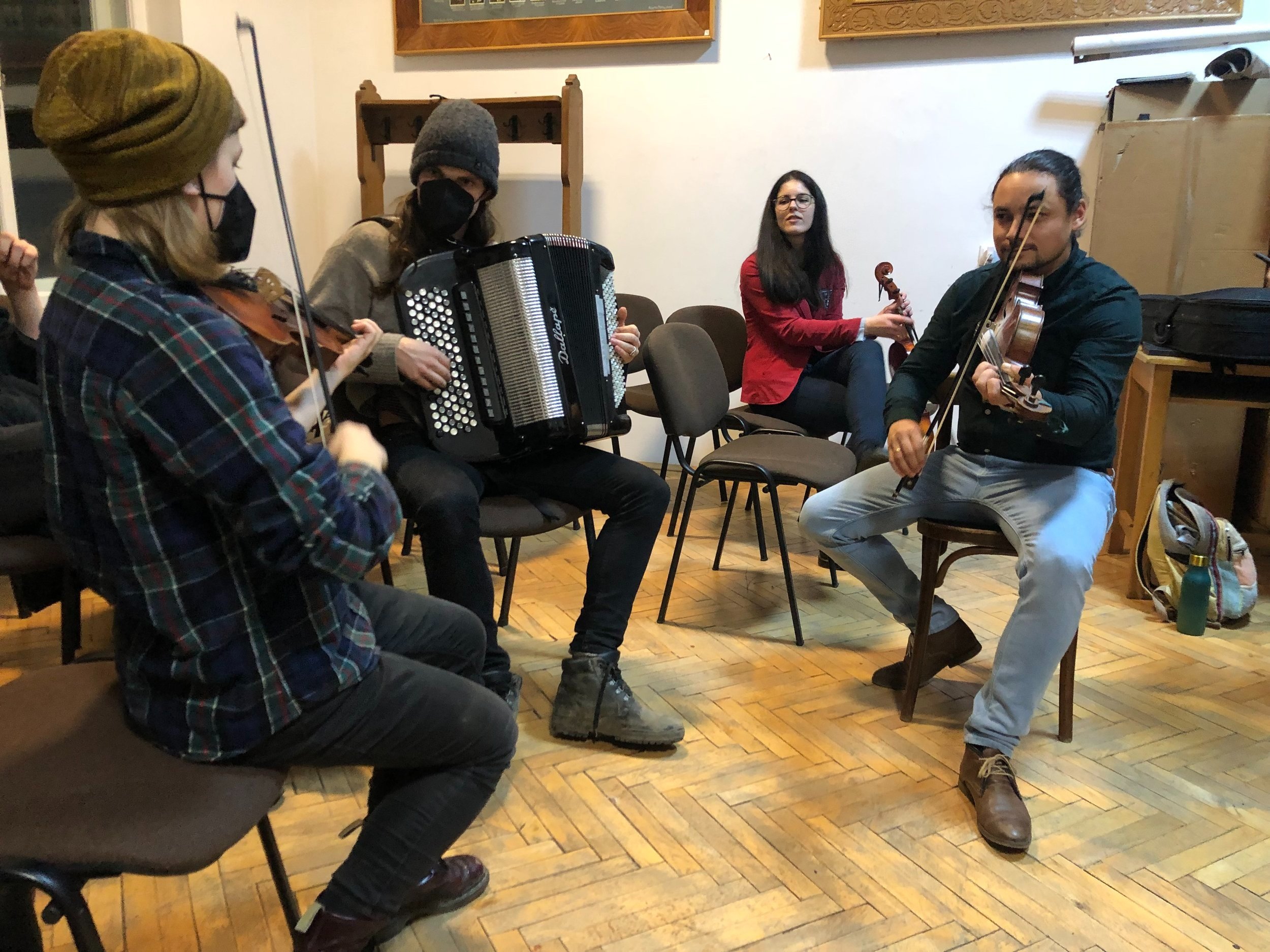
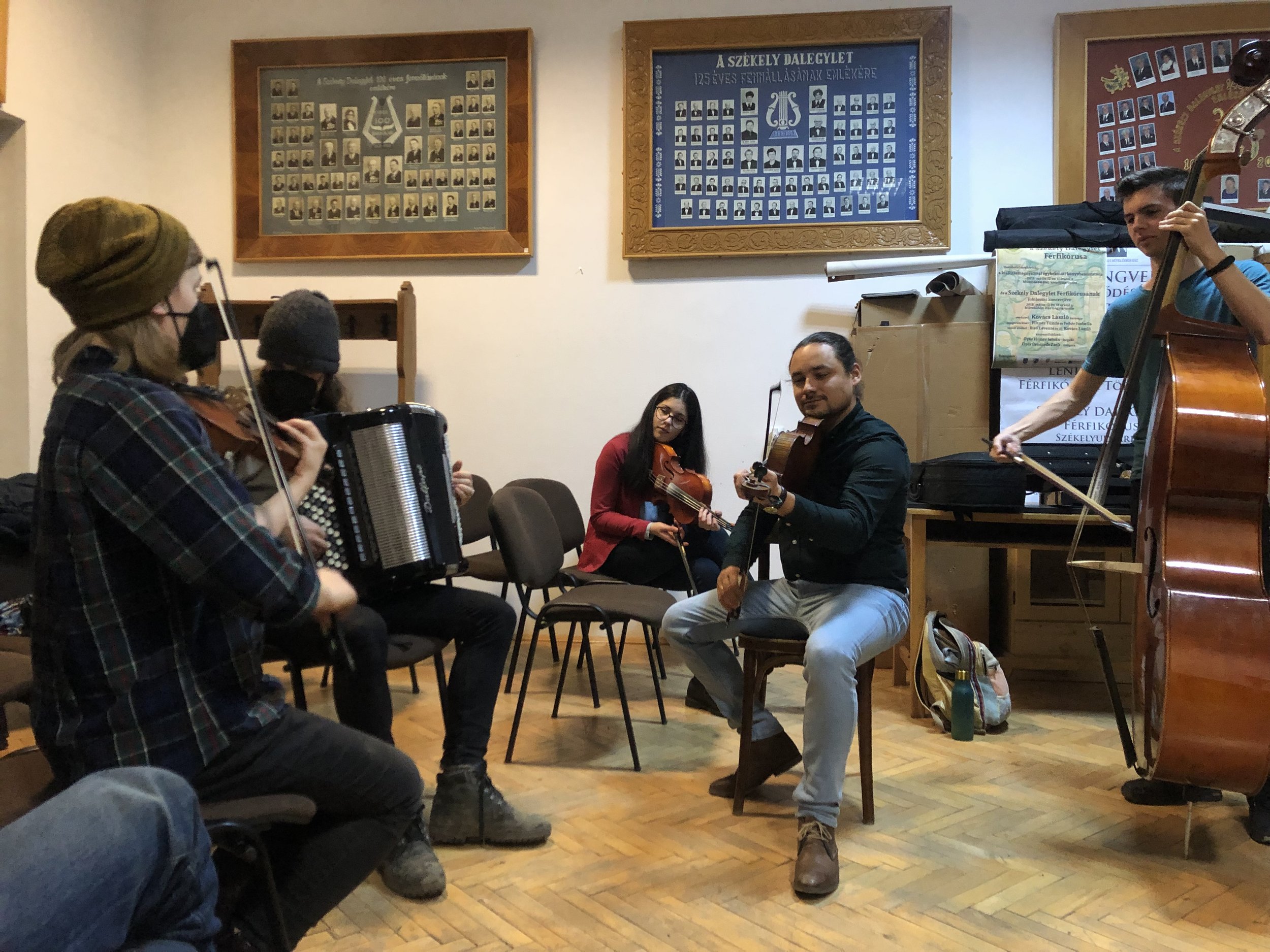


When I returned to Székelyudvarhely in January 2022, I brought a larger group of visiting klezmer musicians: Dan Kunda Thagard, Zafer Mamili (who play together in the Montreal Fidl Kapelye), Rebecca Macinnes and Mattias Kaufmann (whose band Mamaliga recently released a really cool album).
The group was interested in learning some of the basics of brácsa technique — how to hold the instrument in a comfortable way, and basic chord progressions.
Two of Boti’s students, Zsófi and Bence, graciously helped to translate! Here are some take-aways from that lesson:
— In terms of holding the instrument, the angle should be almost perpendicular to the ground, but if you tilt it slightly, you’ll get an ideal angle for gravity to help with drawing the bow.
— Boti taught us a set of tunes from the core repertoire of music from the Udvarhelyszék region (which includes Székelyudvarhely) that he uses to teach beginners. He also demonstrated how he will teach beginners simple chord changes to start with, teaching more complicated chord progressions to the same song once the student is more advanced.
Learning a new instrument is difficult, and I’m glad we were able to get instruction from an expert pedagogue.